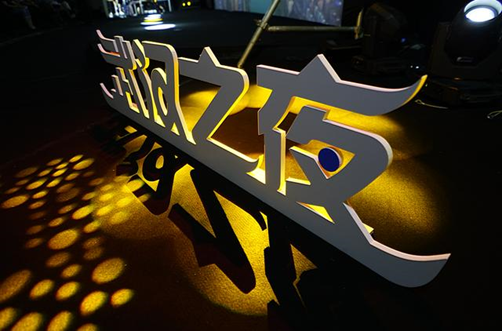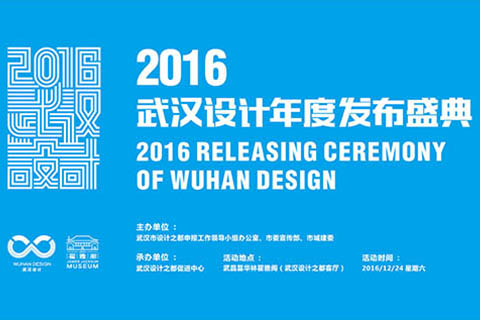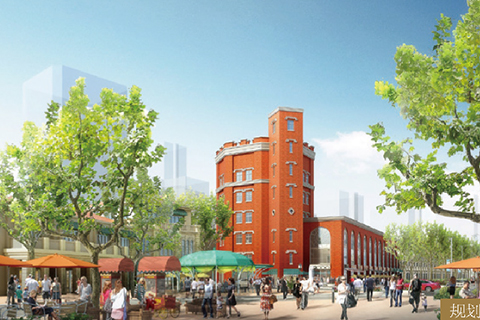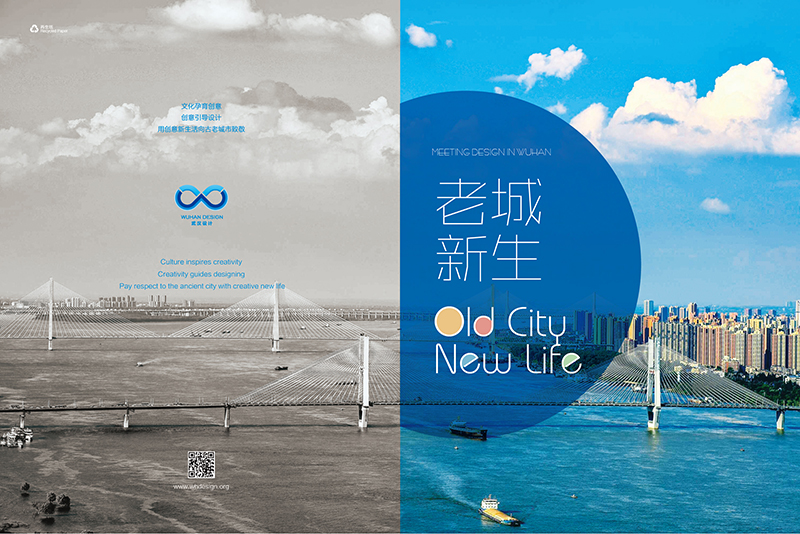Wuhan's Urban Development Strategy
RELEASE: August-22 2017 07:13:29 CHECK: LIKE: 0
To achieve the goal set forth in China's two 100- year plans, strengthen Wuhan’s top-level planning, and develop it into a major central, cosmopolitan city, the Wuhan 2049 Long-Term Development Strategy Study ("Wuhan 2049" for short) has been carried out in accordance with the strategic plans of Wuhan Municipal Party Committee and Wuhan Municipal Government. Spanning a long period of time and involving a large number of different fields, the study aims to devise a development plan for Wuhan that includes development approaches, goals, and focuses).
I. Regional pattern
As the only gateway city in central China, Wuhan not only bridges the places inside and outside of central China, but it also facilitates the development of surrounding areas. While having been in close contact with other major cities in China and other cities in city clusters, Wuhan has less contact with other cities in central China. Currently, Wuhan can stimulate the development of only its new towns and districts rather than remoter areas. Therefore, if Wuhan is to become a major central, cosmopolitan city, it must be able to integrate resources on a larger scale and establish a city cluster in which cities are in close contact and effectively perform their functions.
According to the analysis of the pattern of potential economic development, the "pentagon region" will become a focus of the development of the Yangtze River Delta region. Linking Wuhan, Yueyang, Changzhutan, Nanchang, and Jiujiang, the "pentagon region" has brought together the most important economic, social and cultural resources in the Delta region. It will represent central China to participate in its competition against and cooperation with other places both at home and abroad. Therefore, it is imperative to build an integrated, fast-speed transport network along with an ecological security environment in the region.
II. Wuhan's industrial model
In line with the development goals of China's major cities, Wuhan's industries will be dominated by the tertiary industry. Based on Wuhan's industrial and investment structures, we believe that the goal to develop Wuhan into a major central city will be achieved at different stages with different models. Wuhan's industrial structure will undergo three development stages. At the first stage from now to 2020, Wuhan will be growing as a major central city. At this stage, the city’s secondary and tertiary industries will be interwoven; re-industrialization will continue; and the development of service industries will accelerate. At the second stage from 2021 to 2030, Wuhan will have become a major central city. At this stage, the city’s tertiary industry will overtake its secondary industry. At the third stage from 2031 to 2049, Wuhan will be preparing to be a cosmopolitan city. At this stage, the city’s industries will be dominated by the tertiary industry; and the development of producer services will be the focus of the development of the tertiary industry.
III. Goal & vision
(I) Goal
Competitiveness: the future Wuhan should focus on improving the functions of the four major centers: innovation center, trade center, financial centre, and high-end manufacturing center. Of the four centers, the innovation center is at the core and should highlight the advantages of technology and innovation; the financial center should highlight its capability to effectively allocate financial resources; the trade center should highlight its business and distribution functions; and the high-end manufacturing center should highlight its leading role in the manufacturing sector.
Sustainable development: to achieve sustainable development, Wuhan should develop into a green, livable, inclusive, efficient, and vibrant city. Becoming a green city is the primary guarantee for sustainable development.
(II) Development approach
At the first stage from now to 2020, Wuhan will be growing as a major central city. It will focus on becoming a major city in central China. At this stage, Wuhan's urban development will stimulate the development of the cities in the 1+8 city cluster; its industrial development will accelerate and service industries will grow stronger; the core functions of Wuhan as a cosmopolitan city will be related to trade, modern logistics, and high-end manufacturing, along with innovation, domestic transportation.
At the second stage from 2021 to 2030, Wuhan will have become a major central city. Its urban development will stimulate not only the urban development of cities in the 1+8 city cluster but also the development of the Delta region. At this stage, Wuhan's producer services will rapidly grow and its manufacturing industry will be transferred to the region. In addition, the focuses of Wuhan's urban development will shift from logistics, trade, and high-end manufacturing to technological innovation and the functions of a gateway city, a regional financial center, and the headquarters of Asia-Pacific transnational corporations. At the same time, the city will improve its functions related to trade, modern logistics, and high-end manufacturing.
At the third stage from 2031 to 2049, Wuhan will be preparing to be a cosmopolitan city. Its urban development will stimulate the urban development of cities in the Delta region and beyond. At this stage, the city's industries will be dominated by producer and consumer services. Moreover, it will develop soft power for achieving sustainable development; serve as a culture center, a gateway city, an international financial center, an innovation center, and the headquarters of transnational corporations; and continue to develop trade, modern logistics, and high-end manufacturing.
IV. Green city
Wuhan will develop into a green city by guaranteeing ecological security, protecting the ecological bottom line, developing blue-green networks, and achieving low-carbon development. With regard to ecological security, the land used for Wuhan "1 + 8" city cluster will be properly arranged relying on the Yangtze River, Dabie Mountains, and Mufu Mountains, so as to optimize the region's ecospace. The layout of the region's detention basin will be adjusted such that potential floods from the Yangtze River can be controlled and ecological development can be achieved. With regard to the ecological bottom line, Wuhan's ecological bottom line will be identified through the study of ecological sensitivity and resistance; measures to protect the ecological bottom line will be established; and different development patterns at different levels of ecological security will be determined in order to make urban development more eco-friendly. With regard to the blue-green networks, a blue ecological network featuring "four latitudinal parts and seven longitudinal parts" and a green ecological network featuring "six latitudinal parts and five longitudinal parts" that is based on country parks, ecological urban parks, and ecological communities will be established. A wide variety of country parks will be built as a way to facilitate the management of ecological resources. With regard to low carbon development, low-carbon construction and carbon intensity reduction will be promoted. The use of renewables will be expanded; multi-level smart grid systems will be put in place; and energy user management will be implemented. In addition, circular economy will be promoted in order to reduce the total carbon emissions of manufacturing industry and promote environmentally friendly buildings and transportation.
V. Livable city
The residential communities in Wuhan are characterized by harmony, inclusiveness, and pluralism.
Residential communities should be inclusive, allowing people at different income levels with different educational background and jobs to live together harmoniously. People can buy apartments at different prices in a community based on their actual purchasing power. Real estate developers should build both public and commodity housing in one community, so that the community is inclusive to people at different income levels. The quantity of public and commodity housing respectively in one community should be determined based on the local housing market.
A large number of activities are held in residential communities to help the residents get to know each other and build friendly ties. Community centers will be built in residential communities for residents to meet and talk with each other; the residential committees will organize activities related to culture, sports, food, health, and parenting for residents to attend; lectures on various topics and joint performances will be held regularly in the residential communities. Individual residents are encouraged to join these activities. All these efforts aim to develop communities into large, happy families in which people live in harmony and trust each other.
VI. Inclusive city
(I) Cultural inclusiveness and the influence of cultural revitalization
The literature, art, and folk customs that have the distinctive characteristics of Wuhan and have been passed down from ancient times are less recognized nationwide due to a lack of further development. In the future, more attention will be paid to the continuity and innovation of Wuhan's distinctive culture, especially the preservation of the cultural forms that may disappear. Wuhan's cultural forms and functions will be improved from international perspectives, in order to help its people build up their cultural confidence and identity.
Wuhan's culture has been a blend of the cultures of different provinces since ancient times. Wuhan's people have had a conflicted attitude towards foreign culture. This means they have been accepting yet rejecting foreign culture. As urbanization gains momentum and Wuhan is to develop into a major central, cosmopolitan city, Wuhan will have a large number of non-registered residents. How to assimilate into Wuhan's culture will become a concern to these new residents in Wuhan. To address this concern, Wuhan is required to develop into an inclusive city where cultural differences are treated properly and hostility against the new residents is eliminated.
(II) Creating distinctive, vibrant cultural spaces
Wuhan's historical and cultural resources will be tapped into and the functions of the city's historic street blocks (buildings) will be enhanced to highlight cultural distinctiveness. The economy and culture of the sites where historical buildings are located will be studied in order to preserve these buildings and facilitate the integration of cultural resources and the city's functions. Development of culture industry parks will be optimized in the strategically important areas in order to form a complete chain of cultural industries featuring collaboration and well-defined duties. A number of internationally and domestically advanced cultural facilities will be built in Wuhan. Basic cultural facilities will be built to meet the daily needs of all residents. Cultural centers and cultural facilities in sub districts and communities will be built in order to ensure that local people can join cultural activities at these facilities. In addition, major world events will be designed in Wuhan in an attempt to lead the city's cultural development.
VII. Efficient city
(I) Developing Wuhan into an international transportation hub in central China
Wuhan aims to develop into an international transportation hub by 2049. To this end, Wuhan needs to achieve the following goals: 1. building a gateway airport from which flights reach almost all countries in the world; 2. making the airport a leader in the world in terms of the quantity of passengers and cargo it handles and its operating efficiency; 3. developing Hanyang train station into an international freight hub; 4. developing a multimodal transportation network system in order to make transportation highly efficient.
(II) Developing an integrated urban green transportation system
Abundant ecological resources in Wuhan are conducive to its sustainable development and the development of a green transportation system in this city. To develop an integrated urban green transportation system, there are three goals to be achieved: 1. developing a public transport system based on Wuhan's urban development; 2. allowing public transport to undertake over 60% of traffic volume by 2049; 3. implementing effective traffic demand management and building a road network.
(III) Building a logistics operating and management center in central China
The development goal of the logistics industry in Wuhan can be divided into three aspects: 1. integrating the rail, water, road, and air transport systems to form a multi-modal transportation system; 2. building a transport system that separates passenger transport from cargo transport; 3. generally reducing the cost of freight within Wuhan.
The development of logistics in Wuhan requires the upgrading of both hardware and software. With regard to hardware upgrading, the existing three railway freight stations, ports, and airports will be connected via easily accessible transportation means. With regard to software upgrading, professional management will be introduced to Wuhan and Wuhan Municipal Government will stop managing the logistics of the city. The third-party and fourth-party logistics enterprises will be brought to Wuhan to participate in the management of the city's freight transport system.
VIII. Vibrant city
(I) Urban space development
The model of Wuhan's urban space development: the area within 5km from the city's center is the core of the city, where the high-end functions of the city concentrate. The area within 10KM from the city's center, which is within the third ring road and includes parts of outskirts, is the main urban area where the core functions of the city concentrate. The main urban area is a megacity's economic, political and cultural center that has a dense population.
The outskirts of Wuhan's main urban area will be developed into different "sub-areas", including edge city, industrial cluster, and multi-functional urban area. The edge city is an area at the edge of Wuhan that will have its own businesses, shops, offices, etc. It will be the fastest growing area of this city. The industrial cluster and multi-functional urban area represent two development models for Wuhan's outskirts. The periphery from 30KM of Wuhan's downtown will develop into a new city relatively independent from the main urban area. The multi-functional urban area will serve as a new growth pole of Wuhan.
(II) Urban function system
1. Core functions of the main urban area
The area within the third ring road will be Wuhan's future main urban area. This area will serve as the foundation for Wuhan to develop into an international service provider. Its development will stimulate the development of surrounding areas. Wuhan's third ring road is 90km long and encompasses an area of 530 square kilometers. This area will be built into a "vibrant center" in Wuhan.
The fast growing population of the main urban area should be controlled. Inefficient industrial enterprises should be relocated outside of the main urban area. The high-end research and development management of industrial enterprises will remain; these enterprises will keep close contact with manufacturing enterprises around the world. High-end producer services should be increased; provision of such services at night should be increased; high-end services should concentrate in the area along the Yangtze River. Retail business will be expanded; retail businesses that operate at night will be increased. Producer services should concentrate at one location. Small- and medium-sized retail businesses will be increased. The traditional public spaces in Wuhan will be revitalized with distinctive local characteristics. We hope to develop two axial zones, one along the Yangtze River and the other perpendicular to the river, by connecting the city's centers, building service centers along the river, and developing the city's core functions related to business along the river. We will develop a functional center, business center, and transport hub in Wuhan. Waterfront areas should be exploited and non-motor vehicle lanes should be built so as to provide beautiful riverside view and more open space. In addition, Wuhan's image should be promoted by highlighting its historical and cultural sites, such as Wuchang Uprising Memorial and Yellow Crane Tower, along with the buildings designed by famous designers and the city's big events.
2. "Four Sub-areas" leading the development of the city's outskirts
Wuhan's functions are shown through modules. These modules serve as growth poles that will stimulate the industrial and economic development of the city. These modules will also foster new functions and develop into "sub-areas". In each sub area, the city's functions and industries will be integrated and improved through regional development. In the future, the development of the "four sub-areas" should lead the development of Wuhan's outskirts. These four sub areas are "airport sub-area", "port sub-area", "Optics Valley sub-area", and "automobile sub-area".
In addition to maintaining and developing their competitive industries, the four sub-areas should also improve their functions, integrate industries with Wuhan's functions, and develop as new cities. Based on their defined duties and distinctive characteristics, the industrial clusters in the sub areas can be divided into two types: the industrial cluster dominated by the secondary industry and the industrial cluster dominated by 2.5 and urban industries. The new cities within the sub areas have concentrated service industries and beautiful lakeside views, which will serve to accommodate people from the main urban area. The new cities in these subareas are generally located on the periphery of Wuhan's main urban area, and will develop into distinctive edge cities.
The airport sub-area, primarily relying on Wuhan Tianhe International Airport, links up with the Huangpi District, Dongxihu District, and Wujiashan Economic and Technological Development Zone. The development of this sub-area will focus on the building of an airport industry cluster, Wujiashan urban industry cluster, Panlonghu New City, and Jinyinhu New City. Qianchuan Sub-district will develop into a multi-functional urban area.
The port sub-area primarily involves Xinzhou District, Hongshan District, and parts of Qingshan District. The development of the port sub-area will focus on the development of Yangluo port industry cluster and Wuhan petrochemical industry cluster. Zhucheng will develop into a multi-functional urban area.
The Optics Valley sub-area mainly involves the land of East Lake High-tech Development Zone, Hongshan district, and Jiangxia district. The development of the Optics Valley sub-area will focus on the development of Donghu New Tech City and Tangxunhu New City, in order to promote the upgrading of new-and high-tech industries such as optoelectronics and information. This sub-area will serve as an innovation center for Wuhan and an Optics Valley for the world.
The automobile sub-area mainly involves Caidian District, Hannan District, and Jiangxia district. The development of this sub-area focuses on the development of Taizihu New City and the automobile industry cluster in Changfu and Jinkou. Caidian and Hannan will develop into multi-functional urban areas. Complete service facilities will be built in the sub-area. Multi-level administrative units will form within Wuhan's urban area.
3. Wuhan "1+8" City Cluster
Within Wuhan "1+8" City Cluster, a development axial zone along the Yangtze River and a cross-shaped development axial zone along the Beijing-Guangzhou railway will be built, so that the development of Wuhan's main urban area and four sub-areas can stimulate the development of surrounding areas and align with the development of the four cities on the periphery of the city cluster. In the development axial zone along the Yangtze River, the development of the Optics Valley sub-area will stimulate the development of Huanggang, Huangshi, and Ezhou in the east; the development of the airport sub-area and automobile sub-area will stimulate the development of Tianmen, Xiantao, and Qianjiang in the west; in the development axial zone along the Beijing-Guangzhou railway, the development of the airport sub-area will stimulate the development of Xiaogan and its surrounding cities/towns in the north; the development of the automobile sub-area and Optics Valley sub-area will stimulate the development of Xianning's urban area in the south.
(III) The centers of the main urban area
Wuhan's functional centers will be arranged along the banks of the Yangtze and Han Rivers rather than previously unorganized layout.
1. Four banks of the two rivers: Wuhan's functional centers
Wuhan's functional centers will be arranged along the Yangtze River beaches in Hankou, Wuchang, Hanyang, and Qingshan as well as along the Han River beach. Such arrangement aims to provide beautiful riverside views while gathering the city's high-end services for its economic, business, and trade development.
2. Development of the north and south centers
The development of the north and south of the Yangtze River will be stimulated by the development of core functional centers; the city's functional centers will also form in the north and south of the River.
The north center: the traditional business district in Hankou will serve as the north center. This center encompasses the financial street (Jianshe Avenue), the business district from Wuhan Plaza Shopping Mall to Xunlimen, the traditional business district along Zhongshan Avenue, and the Binjiang business district and Hanzheng Street block under construction. The area from Jianshe Avenue to Wuhan Plaza will be built into a core modern business district; Hanzheng Street will develop into a cluster of tourism, business, and emerging service industries; and Hankou's business district along the Yangtze River will develop into an internationally competitive financial center where the headquarters of transnational corporations are located.
The south center: the corporate headquarters in Binjiang of Wuchang and the business district along the south bank of Shahu Lake will together serve as the south center. This center encompasses areas along Heping Avenue, Xiaoguishan area, Shuiguohu's surrounding areas, the west areas of Zhongnan Road and Zhongbei Road, and Hongshan square. Its scope extends to the ancient town of Wuchang. Tapping into water resources in the Yangtze River and Shahu Lake, this center will develop into a vibrant cultural center in Wuhan and a financial center in the south of the Yangtze River. The Binjiang area will develop into a business district reflecting Wuhan's image and culture. The Shahu area will serve as a vibrant multi-functional center underlain primarily by finance-related functions along with the functions related to culture and business. The Shanhu Bay area will be built in such a way that the link between the functions and spaces of the two centers will be highlighted.
3. Periphery: sub-center and new city center
Sub-centers will be formed in Wuhan's main urban area. These sub-centers will act as Wuhan's service providers for the region and will be homogeneously distributed. They will have the combined functions of Wuchang, Hankou and Hanyang districts. The sub centers not only serve as Wuhan's business centers and transit hubs, but also act as service providers.
A number of regional centers will form in Wuhan's main urban area. Outside of the main urban area, new city centers will form, where development potential will be tapped into and the areas having development potential will be equipped with large service facilities. These centers will stimulate the development of the main urban area and beyond, and facilitate the formation of vibrant business districts.
4. The main urban area underlain by metro lines
Metro lines will be built in the city's core areas to connect Wuchang Railway Station, HanKou Railway Station, WangJiadun, Hanzheng Street, Guqintai, Zhongnan Road, the Wanda Plaza in the Chu River and Han Street area, Xudong area, and Hankou's business district along the Yangtze River. The metro lines will be integrated with public transit systems, forming a ring-shaped transport hub and providing multiple means of transportation for local people to choose from.
HOT RANK
EVENT ALERTS
RELATED READING
- • Between the Past and the Future: Creativity as a Bridge of the River City - Wuhan
- • Hankou Concession
- • Founding History of "Made in Hanyang": the Rise of Modern China's Industry in
- • Summary of Research Findings on Wuhan’s Economic and Social Development Environ
- • Wuhan East Lake High-tech Development Zone -- China · Optics Valley




